There was a time when every Android phone had some sort of weird gimmicky feature. Kyocera was doing interesting things with foldable phones, Motorola made a phone that swiveled open, and don’t even get us started on Samsung’s many strange devices. The LG V10 and its “Second Screen” is a throwback to those strange days.
LG is not the first manufacturer to make a phone with a secondary display. The Samsung Continuum was equipped with the “ticker display,” a small section of the display located under the main display. It was used in a similar way to the Information stream on Samsung Galaxy S6 Edge phones. LG’s attempt is not quite as ambitious, but it aims to be more useful. Did they succeed in bringing the weird back to Android? AT&T was kind enough to provide us with a V10, so let’s find out.
Design & Hardware
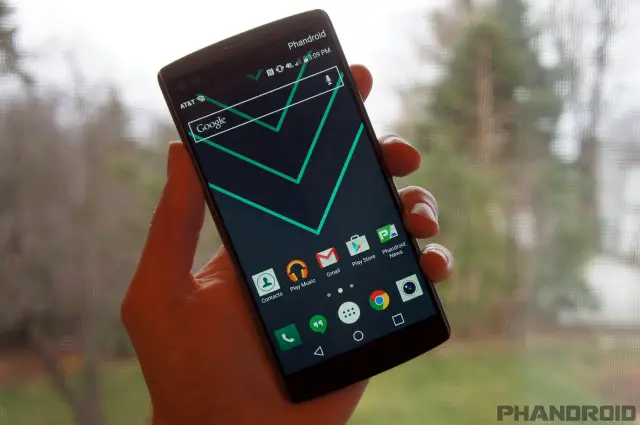
Just when you think Android phones can’t get any bigger, a new one comes along. My first reaction when taking the V10 out of the box was “holy crap this thing is big.” Most phablets make up for the big display size with small bezels, a thin profile, or a lightweight frame. The V10 doesn’t try any of these tricks. It’s big, thick, and heavy.
One thing that makes the V10 seem bigger is the built-in silicone bumpers on the sides. The bezel on the sides of the display is actually very small, but the bumpers add extra width. It’s a small price to pay for more durability. Speaking of which, the V10 is not a phone you need to worry about dropping. It’s built like a tank, and thanks to the textured back cover, it won’t slip out of your hands.
The overall design of the V10 is a little uninspired. I wouldn’t call it ugly, but I certainly wouldn’t call it pretty. It’s very masculine, especially the black model. The whole phone is covered in matte black, metal, silver accents, and rough textures. We don’t expect the V10 to win any fashion awards, but for the right person it’s a great-looking device.
The V10 is the first (non-Nexus) LG phone with a fingerprint sensor. It’s located on the back of the device, doubling as the power button. It can be used for a few things, such as Android Pay and Google Play Store purchases, but the most common use is unlocking the phone. This isn’t the most reliable fingerprint sensor I’ve ever used, but it’s good enough that you’ll want to use it.
Second Screen
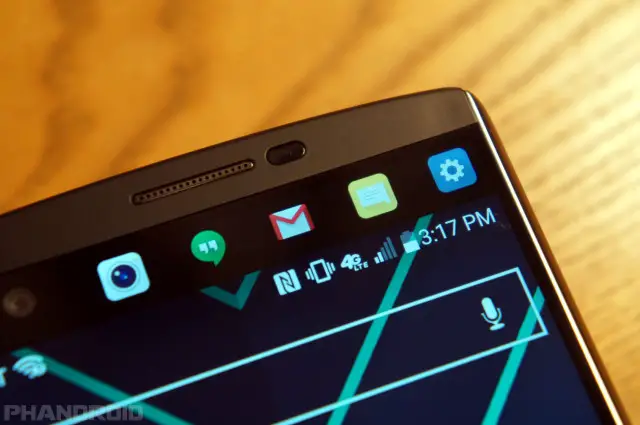
The feature that sets this phone apart is what LG calls the “Second Screen.” It’s a throwback to the days when Android phones were a little weird. Unlike the secondary display on the Samsung Continuum, the Second Screen on the V10 is very small. It’s only 2-inches wide and about 1/4-inch tall. This small space is used to display your five favorite apps or people, five most recently used apps, media controls, and more.
The big question about the Second Screen is does it add any value to the device? Is it actually useful, or is it just another gimmicky feature? Some of the Second Screen stuff is better than others. App shortcuts aren’t that useful, but I did find the most recent apps and media controls to be handy. The Second Screen is also useful in some stock LG apps. For example, in the camera app you can switch between the modes from the Second Screen.
Another cool feature of the Second Screen is what it shows when the main display is off. You can see the date, time, battery level, and notifications at all times. It’s nice to be able to quickly glance at that info, and the effect on battery life is minimal if any. A lot of phones try to give you easy ways to glance at this info, but the Second Screen might be the best method.
The Second Screen can be really handy or just wasted space, depending on how you use your phone. I like the fact that LG is dipping back into the bag of weird tricks that was so prevalent in the early days of Android. The Second Screen is one of the best gimmicky features I’ve used on a phone, but it definitely is still a gimmick.
Main Display
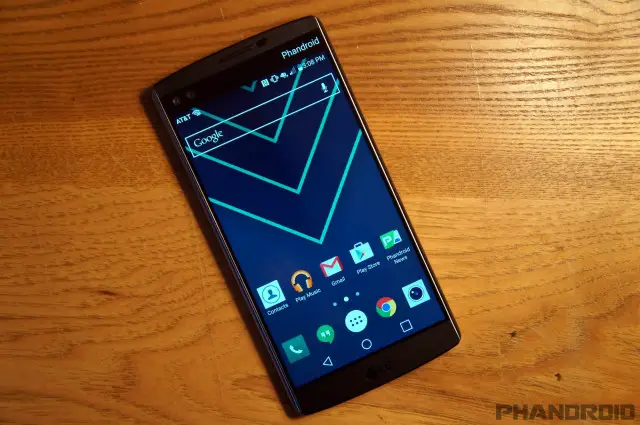
Let’s talk about the main display, the one you will use most of the time. The V10 has a 5.7-inch LCD display with 2560×1440 resolution. As you would expect, this is a very nice display. Typically, LCD displays are not as saturated as AMOLED displays. That’s not so much the case with the V10. Colors are vivid, and blacks are very deep for an LCD.
The ppi comes in at 513, which is slightly less than the 5.5-inch display on the LG G4. You’re still not going to notice any pixels. Everything is crisp and crystal clear. The display also looks really nice outdoors (at least in the gloomy Midwest light). It’s a great display, but after the unusual Second Screen, there’s really not much to say about it. You’re getting a big, bright, and beautiful display.
Performance & Battery
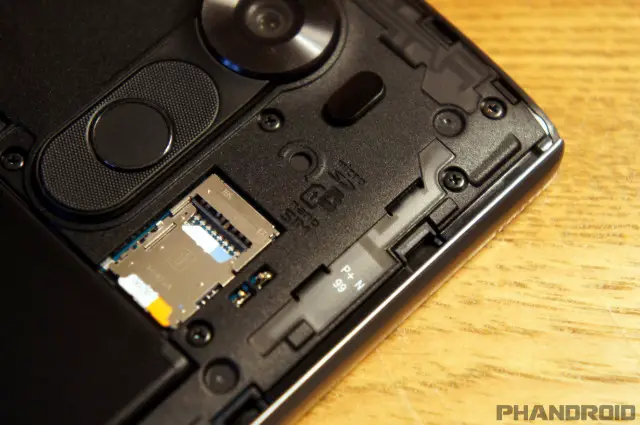
We already talked about the exterior of the device being “built like a tank,” but on the inside it’s just as tank-like. LG has thrown in some of the best specs you’ll find today. Powering this beast is a Qualcomm Snapdragon 808 and 4GB of RAM. The 808 is not the new kid on the block anymore, but it’s still a powerful and trusty processor. The V10 flew through everything I could throw at it. Compared the G4, this phone feels smoother, most likely due to the extra RAM. Just like a tank, this phone is powerful.
The battery life is equally impressive. You would expect a pretty beefy battery to be in a phone of this size, and you’d be right. LG has tucked a 3,000 mAh battery inside the V10. I was able to easily get through a single day without needing to stop for a charge. Getting through a day without needing to plug in might not seem amazing, but many of the recent phones I’ve reviewed have needed some extra juice before bed time.
Camera
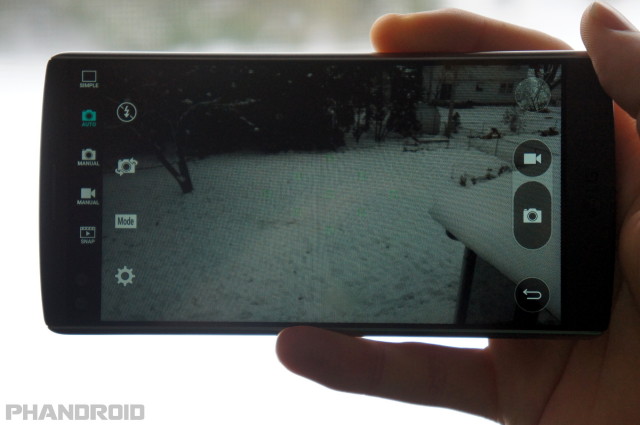
The most interesting feature of the V10 is the weird Second Screen, but it’s not the best feature. Not even close. The crown jewel of the LG V10 is the camera. LG has been doing a great job with their cameras as of late, and the V10 continues the trend. Simply put, this camera is amazing.
Photos from the V10 are some of the most detailed I’ve ever seen from a phone. It’s the type of camera that just begs to be used. Recently, It snowed for the first time of the year. The first snow is always a beautiful sight, and with the V10 all I wanted to do was take as many photos as I could. Snow can sometimes be a difficult thing to photograph, but the V10 performed great.
The only problem I had with the camera is the default “Auto” mode settings. Auto mode does a really poor job in low light situations where there’s a bright light in the scene. It was nearly impossible to get a good photo at a parade full of Christmas lights. This is one area where I think the G4 is better than the V10. The good news is you can easily switch to a different camera mode and fine tune the controls.
A new thing with the V10 is manual controls for video. You can adjust things like ISO and white balance while taking advantage of the 4K video recording. All of these camera features are wrapped up in a very easy to use package. A big reason why LG’s cameras are so good is because the software is good enough to keep up.
Software
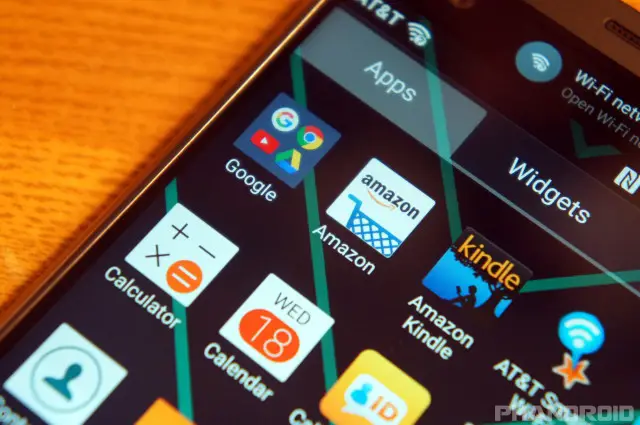
The V10 is running the latest version of LG’s custom interface based on Android 5.1.1. As far as Android skins go, it’s one of the more refined and unobtrusive ones out there. The default launcher is clean and easy to use, plus you can do cool things like create folders in the app drawer. LG’s skin is all about customization. Everything from the screen-off animation to navigation bar buttons can be tweaked. The only problem is you have to dig through the settings to find the customization options. It would be nice if they were all in one place.
LG has included their usual tricks. You can double-tap to unlock the phone (and even use a KnockCode to securely unlock). Dual Window allows you to run two apps at the same time. The buttons on the back can still be used as shortcuts. It can be a lot to digest if you’ve never used an LG phone before. Check out our tips and tricks list to find out how to use all of the software features.
There are a few things that I don’t like about LG’s software. First, when you pull down the notification shade it always shows the Quick Settings instead of requiring an extra pull or a two-finger gesture. I don’t need to see a dozen toggles every time I want to check a notification. They’ve also buried or removed a lot of Lollipop features, but that becomes less of a problem as Marshmallow arrives.
Conclusion

In the past, Android manufacturers would include strange gimmicks to set their phones apart. We look back at those times with rose-colored glasses, but it’s never as good as we remember. All of those weird gimmicks were there to hide flaws and make phones seem more exciting. The V10 is good enough that it doesn’t need any gimmicks.
There are a lot of reasons why someone should buy this phone, and the Second Screen is not one of them. Buy this phone for the great camera. Buy it for the big display. Buy it for the battery life. Buy it because you like textured things that feel good in your hand. The Second Screen is like the toy that comes in a Happy Meal. You’re glad you got it, but the main event is the cheeseburger and fries.
LG V10 Rating: star_fullstar_fullstar_fullstar_fullstar_empty (4 / 5)
The Good
- Great camera
- Beautiful main display
- Smooth performance
- Tank-like build quality
The Bad
- Big, thick, and a little heavy to hold
- Second Screen is unnecessary
The Bottom Line
The LG V10 is a beastly phone. If you can handle the size, there’s a lot to like about it. You’re getting one of the best cameras on the market, great performance, a beautiful display, better than average battery life, and a gimmicky Second Screen to play around with. The V10 is not LG’s best work, but the camera makes up for it.

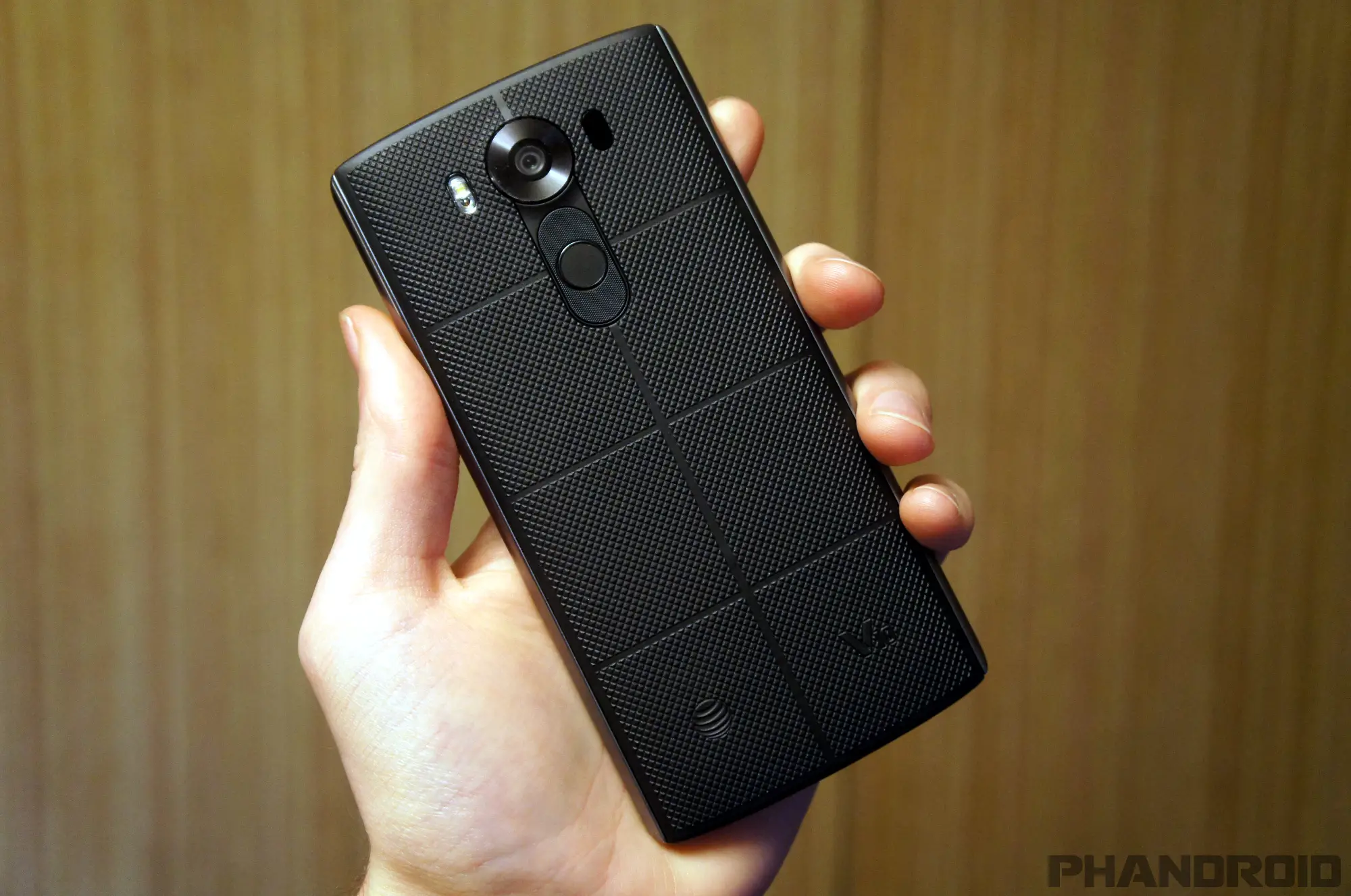











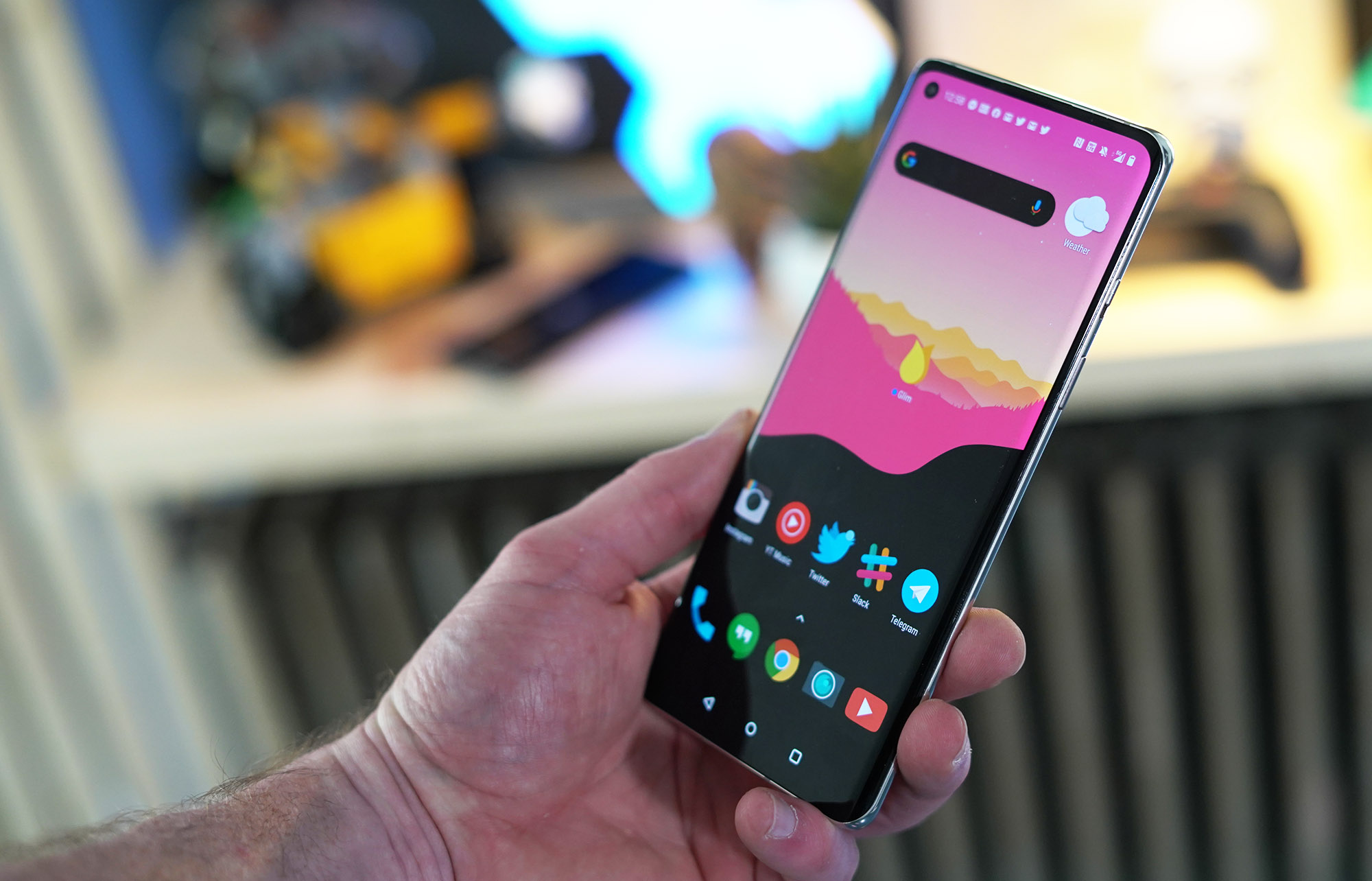







Comments